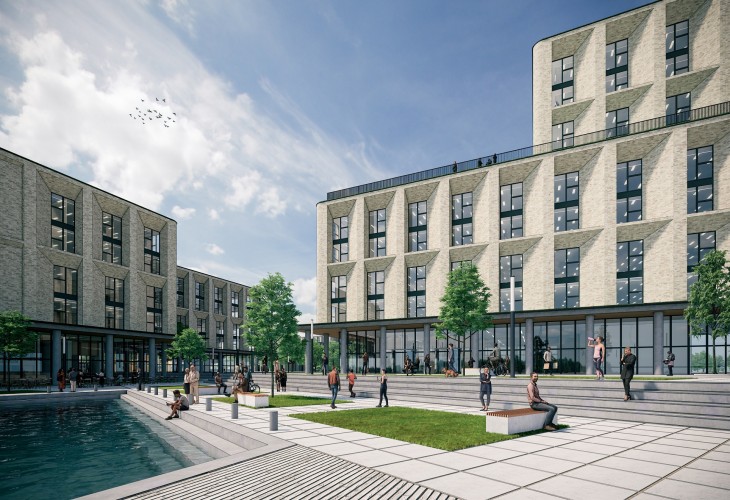
Net zero carbon offices are not just achievable, they’re imperative.
12 Mar 2021
The International Panel on Climate Change’s advice that unless we limit global warming to 1.5°C above pre-industrial levels, we face catastrophic climate change was a stark warning late in 2018. Immediate action is required to achieve the massive cuts in global greenhouse gas emissions needed by 2030 if we are to stand a chance of getting to zero emissions. It’s a vast challenge and will only be tackled by governments, businesses and civil society uniting in their policies and actions to drastically reduce emission levels.
The built environment is responsible for 34% of the UK’s greenhouse gas emissions and over one third of those are from commercial or government premises. It comes as no surprise that the UK Green Building Council (UKGBC) is recommending that the office sector reduce energy demand by an average of 60% by 2050 if we are to help the UK achieve net zero.
It’s quite a challenge, but one we relish at Halliday Fraser Munro as sustainability remains at the heart of all we do. Indeed, we have our own commitment to being carbon neutral.
UKGBC has developed a framework definition for net zero carbon buildings to provide the clarity the industry needs to achieve net zero carbon in office construction and operation. Building on circular economy principles, we need take a cradle-to-cradle approach to design with a clear vision of how they can be deconstructed and recycled or repurposed at the end of their life.
The building blocks of the most sustainable buildings are deceptively simple. They relate to the location of the building and understanding the surrounding climate and microclimate. It’s vital that architects are involved at the earliest stage possible so they can establish the optimal orientation, design and geometry for the building and calculate the best sustainable energy technologies. That means architects can create building designs that minimise construction costs while maximising environmental performance.
On larger sites there may be opportunities for onsite renewable energy generation carbon off-setting by adding trees to the landscape. While out of town sites may present some sustainable commuting issues in the short term, the accelerating uptake of electric, and potentially hydrogen, powered vehicles coupled with enhanced cycling and mass transit networks can help in the long term.
The prospect of spending more on a development with impeccable environmental credentials might, initially, seem onerous. But commercial tenants are well aware of their own environmental duties and lower running costs will help to attract premium rentals. Investors are becoming increasingly cognisant around the importance of ethics and sustainability.
After the pandemic, we believe offices will still have a vital role to play in our lives. Delivering an environment that is better for our planet will be key to ensuring the office thrives in the future.
